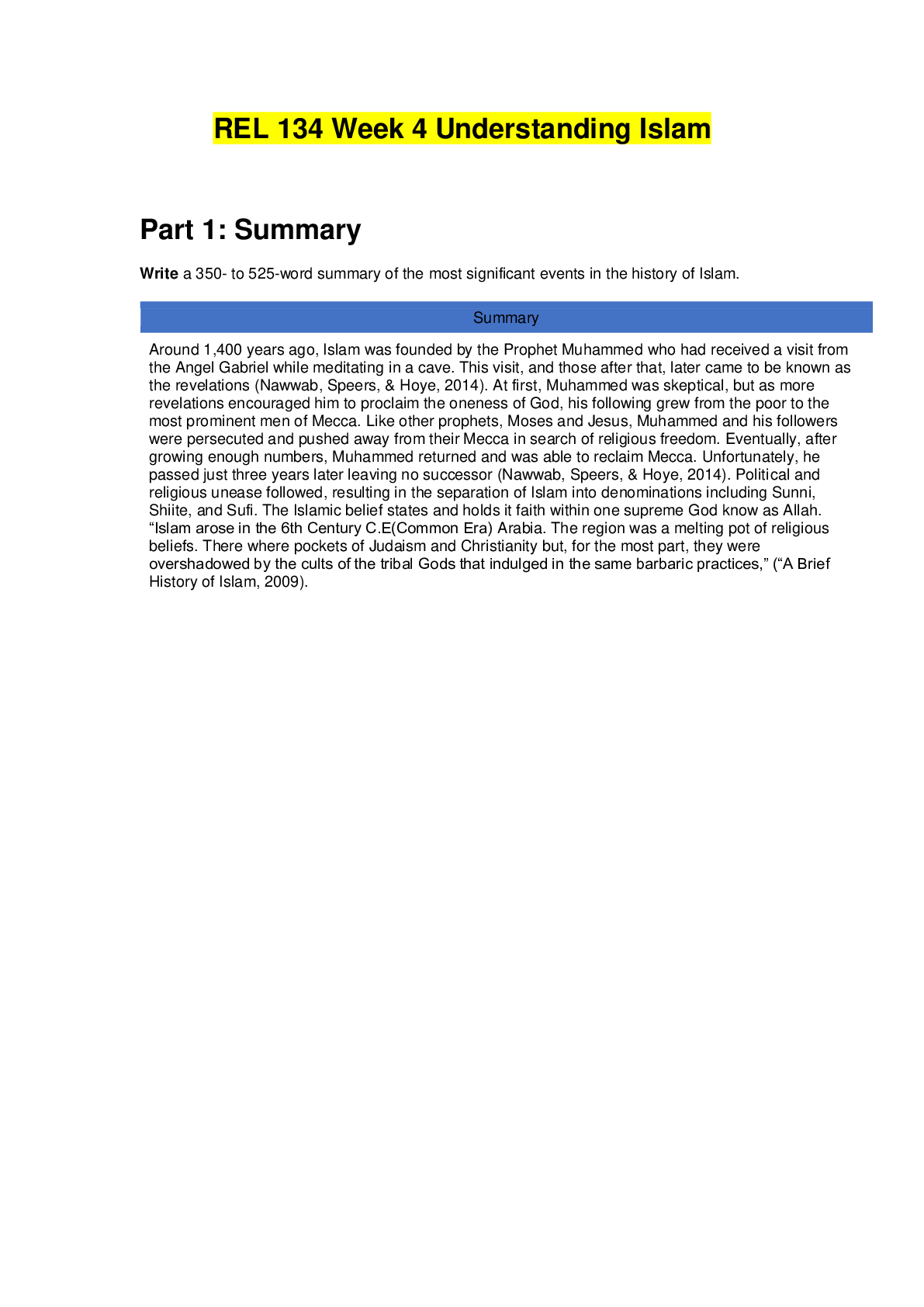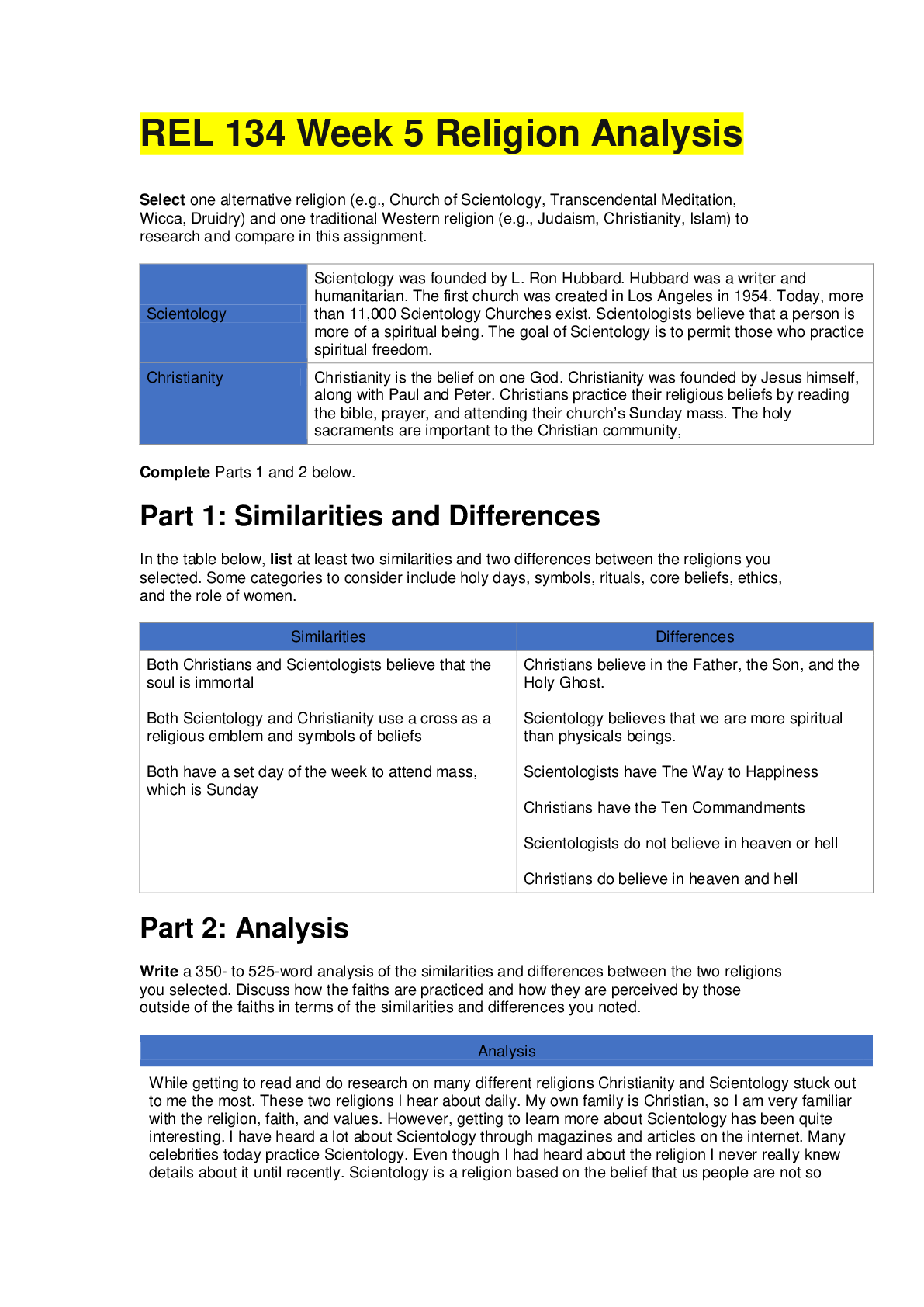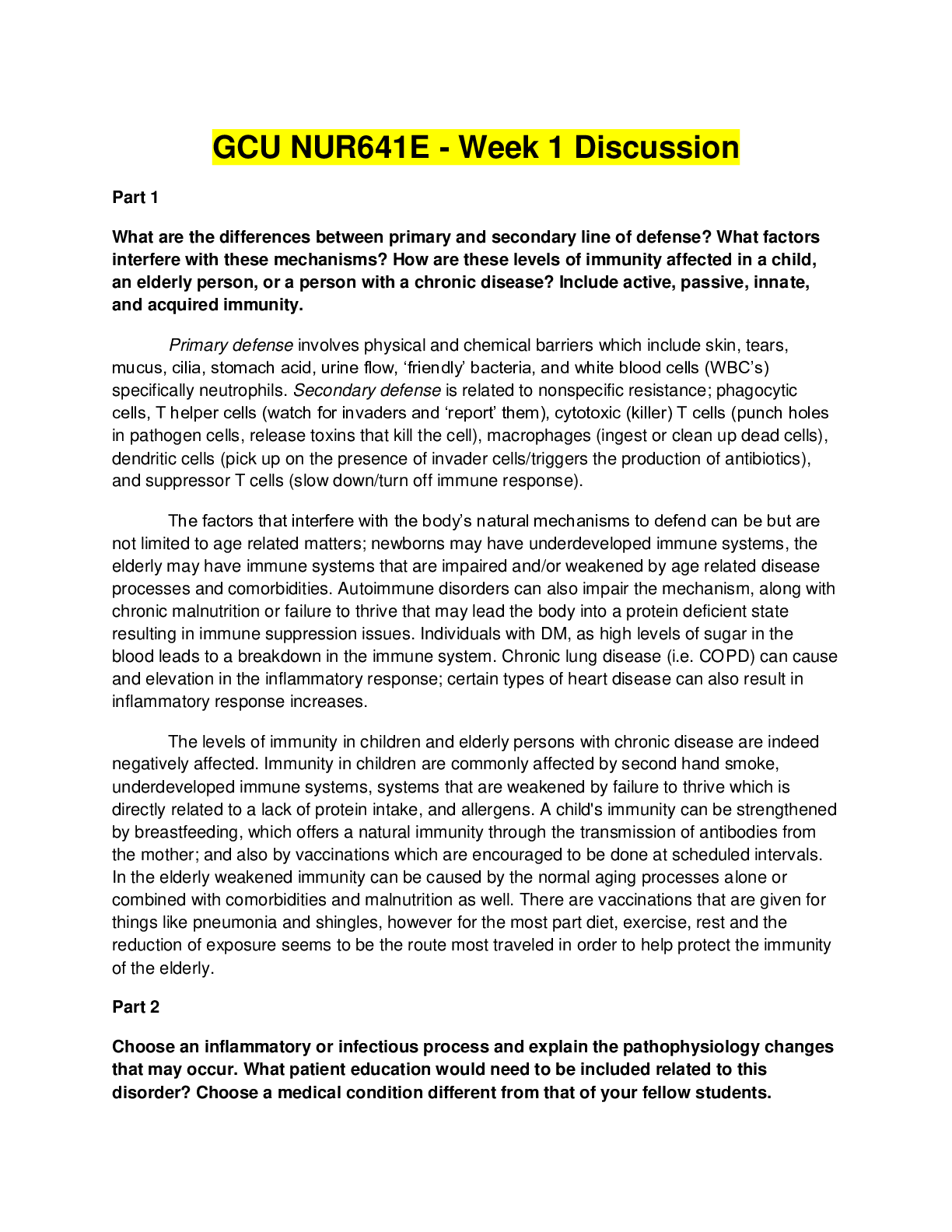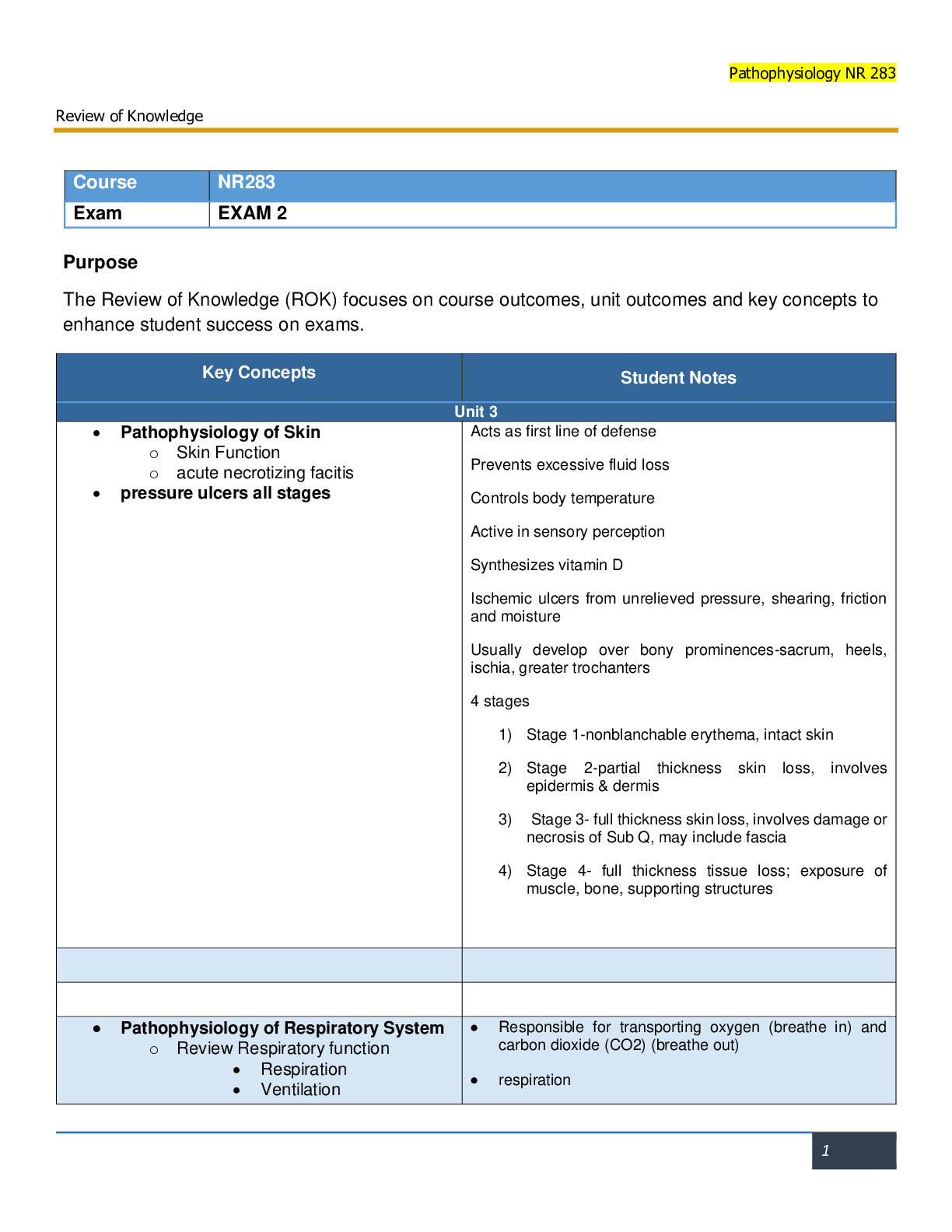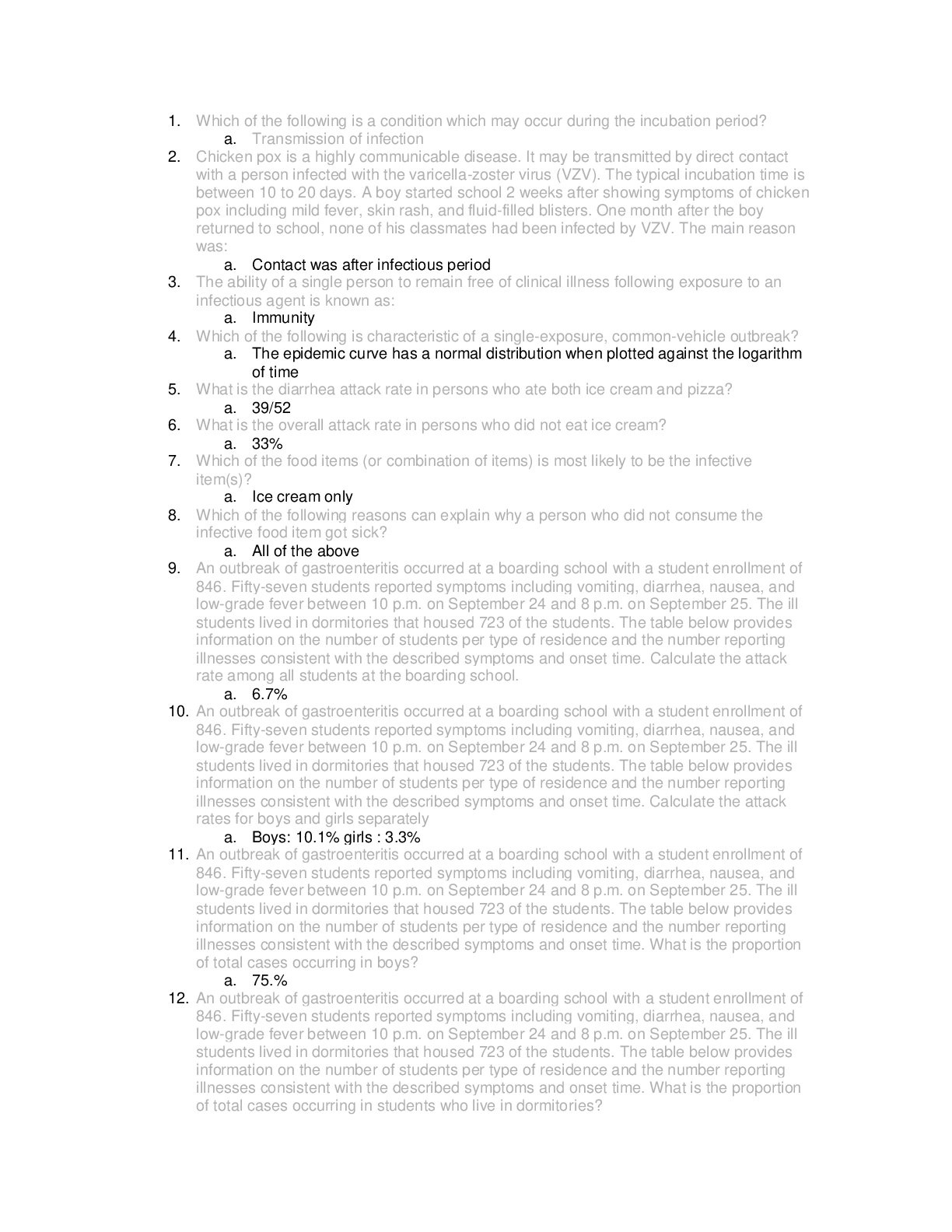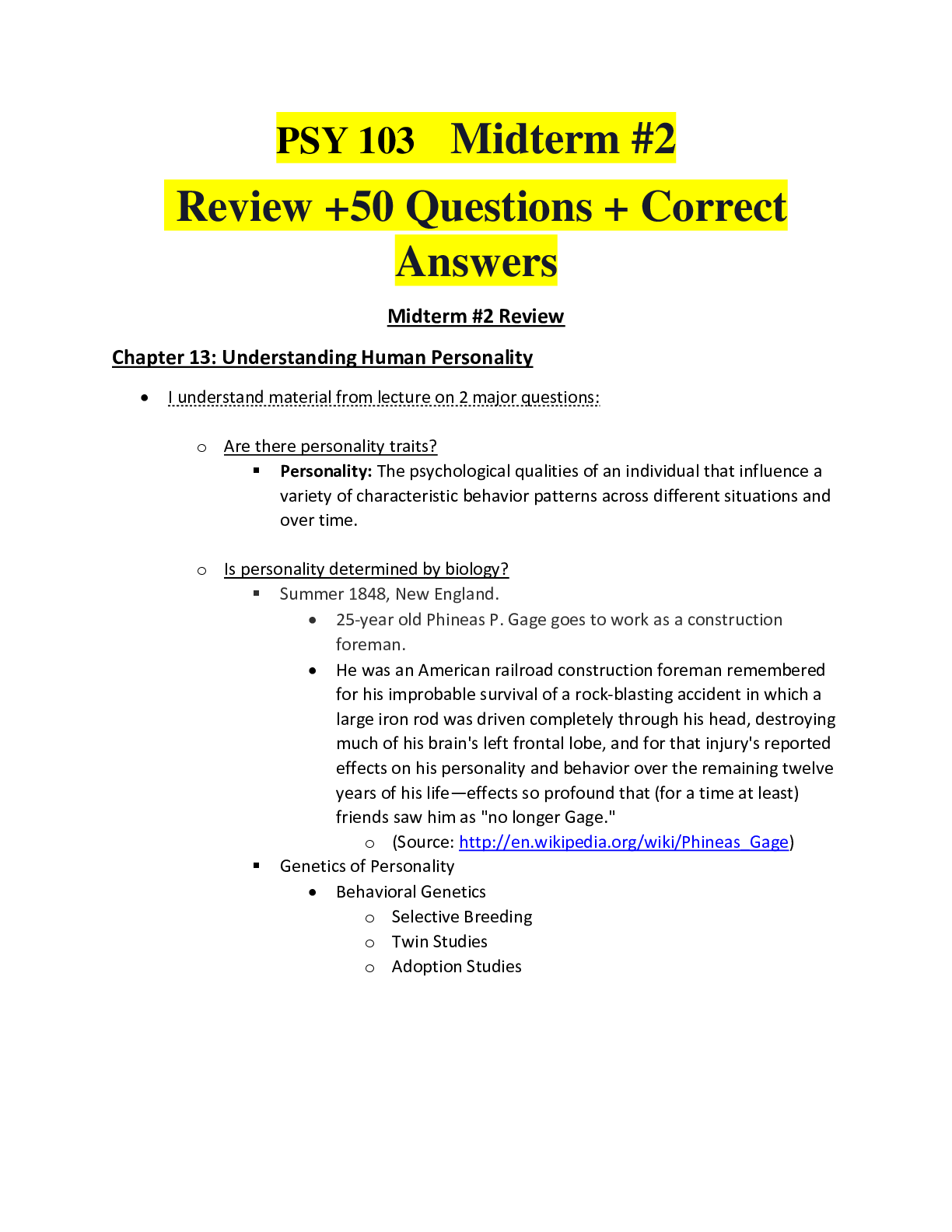Financial Accounting > STUDY GUIDE > Intermediate Acc 1 - Hw Ch 7 (BE 1-13 & E 1-9) - Texas A&M University (All)
Intermediate Acc 1 - Hw Ch 7 (BE 1-13 & E 1-9) - Texas A&M University
Document Content and Description Below
Intermediate Acc 1 - Hw Ch 7 (BE 1-13 & E 1-9) BE7-1 Kraft Enterprises owns the following assets at December 31,2014 cash in bank-savings account $68000 cash on hand $9,300 cash refund due fro... m IRS $31,400 checking account balance $17,000 posted checks $750 certificates of deposit (180 days) $90,000 What amount should be reported as cash? BE 7-2Restin Co. uses the gross method to record sales made on credit. On June 1,2014, it made sales of $50,000 with terms 3/15, n/45. On June 12,2014, Restin received full payment for the June 1 sale. Prepare the required journal entries for Restin Co. BE7-3 Use the info in 7-2, assuming Restin Co. uses the net method to account for cash discounts. Prepare the required journal entries for Restin Co. BE 7-4 Wilton, Inc. had net sales in 2014 of $1,400,000. At December 31, 2014, before adjusting entries, the balance in selected accounts were: Accounts receivable $250,000 debit, and Allowance for doubtful accounts $2,400 credit. If Wilton estimates that 2% of its net sales will prove to be uncollectible, prepare the December 31, 2014, journal entry to record debt expense. BE 7-5 Use the info in 7-4 for Wilton, Inc a) instead of estimating the uncollectible at 2% of net sales, assume that 10% of accounts receivables will prove to be uncollectible. Prepare the entry to collect bad debt expense b)Instead of estimating uncollectable at 2% of net sales, assume Wilton prepares an aging schedule that estimates total uncollectible accounts at $24,600. Prepare the entry to record bad debt expense. BE7-6 Milner Family Importers sold goods to Tung Decorators for 30,000 on November 1, 2014 accepting Tung's $30,000, 6-months, 6% note. Prepare Milner's November 1 entry, December 31 annual adjusting entry, and May 1 entry for the collection of the note and interest BE 7-7 Dold Acrobats lent $16.529 to Donaldson, Inc., accepting Donaldson's 2-year, $20,000, zero-interest bearing note. The implied interest rate is 10%. Prepare Dold's journal entries for the initial transaction, recognition of interest each year, and the collection of $20,000 at maturity. BE 7-8 On October 1, 2014 Chung, Inc, assigns $1,000,000 of its accounts receivables to Seneca National Bank as collateral for a $750,000 note. The bank assesses a finance charge of 2% of the receivable assigned and interest of the note of 9%. Prepare the October 1 journal entries for both Chung and Seneca. BE 7-9 Wood Incorporated factored $150,000 of accounts receivables with Engram Factors Inc. on a without recourse basis. Engram assesses a 2% finance charge of the amount of accounts receivable and retains an amount equal to 6% of accounts receivable for possible adjustments. Prepare the journal entry for Wood Incorporated and Engram Factors to record the factoring of the accounts receivable to Engram. BE 7-10 Using the info in 7-9 for Wood. Assume that the receivables are sold with recourse. Prepare the journal entry for Wood to record the sale, assuming that the recourse liability has a fair value of $7,500. BE 7-11 Arness Woodcrafters sells $250,000 of receivables to Commercial Factor, Inc. on a with recourse basis, Commercial assesses a finance charge of 5% and retains an amount equal to 4% of accounts receivable. Arness estimates the fair value of the recourse liablitity to be $8,000. Prepare the journal entry for Arness to record the sale. BE 7-12 Use the info in 7-11 for Arness Woodcrafters but assume that the recourse liability has a fair value of $4,000, instead of $8,000. Prepare the journal entry and discuss the effects of this change in the value of the recourse liability on Arness's financial statments. BE 7-13 Recent financial statements of General Mills, Inc. reported net sales of $12,442,000,000. Accounts receivables are $912,000,000 at the beginning of the year and $953,000,000 at the end of the year. Compute General Mills' accounts receivable turnover. Compute General Mills' average collection period for accounts receivables in days. Accounts Receivable Turnover 13.34 E 7-1 (Determining cash balance) The controller for Clint Eastwood Co. is attempting to determine the amount of cash to be reported on its December 1,2014, balance sheet. 1. Commercial savings accounts of $600,000 and commercial checking accounts balance of 900,000 are held at First National Bank of Yojimbo. 2. Money market fund account held at Volonte Co. (a mutual fund organization) permits Eastwood to write checks on this balance, $5,000,000. 3. Travel advances of $180,000 for executive travel for the first quarter of next year (employee to reimburse through salary reduction). 4. A separate cash fund in the amount of $1,500,000 is restricted for the retirement of long-term debt 5. Petty cash fund of $1,000 6. An L.O.U. from Marianne Koch, a company customer, in the amount of $190,000 7. A bank overdraft of $110,000 has occurred at one of the banks the company uses to deposit its cash receipts. At the present time, the company has no deposits at this bank. 8. The company has two certificates pf deposit, each totaling $500,000. These CDs have a mortality of 120 days. 9. Eastwood has received a check that is dated January 12, 2015 in the amount of $125,000 10. Eastwood has agreed to maintain a cash balance of $500,000 at all times at First National Bank of Yojimbo to ensure future credit availability. 11. Eastwood has purchase $2,100,000 commercial paper of Sergio Leone Co. which is due in 60 days 12. Currency and coin on hand amounted to $7,700 a) Compute the amount of cash to be reported on Eastwood Co's balance sheet at December 31, 2014 b) Indicate the proper reporting for items that are not reported as cash on December 31, 2014, balance sheet. E 7-2 (Determining Cash Balance) Presented below are a number of independent situations. For each individual situation, determine the amount that should be reported as cash. If the item(s) is not reported as cash, explain the rationale. 1. checking account balance $925,000, certificate of deposit $1,400,000; cash advance to subsidiary of 980,000; utility deposit paid to gas company $180 2. checking account balance $600,000; an overdraft in special checking account at same bank as normal checking account of $17,000; cash held in a bond sinking fund $200,000; petty cash fund $300; coins and currency on hand $1,350 3. Checking account balance $590,000, postdated check from customer $11,000; cash restricted due to maintaining compensating balance requirement of $100,000, certified check from customer $ 9,800 postage stamps on hand $620 4. Checking account balance at bank $37,000; money market balance at mutual fund(has checking privileges) $48,000; NSF check received from customer $800 5. Checking account balance $700,000; cash restricted for future pant expansion $500,000; short-term Treasury bills $180,000; cash advance received from customer $900 (not included in checking account balance); cash advance of $7,000 to company executive, payable on demand; refundable deposit of $26,000 paid to federal government to guarantee performance on construction contract. E 7-3 (Financial Statement Presentation of Receivables) Jim Carrie Company shows a balance of $181,140 in the accounts Receivable account on December 31, 2013. Installment Account due in 2014 $23,000 Installment Account due after 2014 $34,000 overpayment to vendors $2,640 due from regular customer, of which $40,000 represents accounts pledged as security for a bank loan $79,000 Advance to employees $1,500 advance to subsidiary company (due in 2015) $81,000 Illustrate how the info above should be shown on the balance sheet of Jim Carrie Company on December 31, 2013. E 7-4 ( Determining Ending Accounts Receivable) Your accounts receivable clerk, Mitra Adams, to whom you pay a salary of $1,500 per month, has just purchased a new Acura. You decided to test the accuracy of the account receivable balance of $82,000 as shown in the ledger. Follow info in the 1st year in business: 1. Collection from customer $198,000 2. Merchandise purchased $320,000 3. Ending merchandise inventory $90,000 4. Goods are marked to sell at 40% above cost Compute an estimate of the ending balance of accounts receivables from customers that should appear in the ledger and nay apparent shortage. Assuming that all sales are made on account. E 7-5 (recording sales gross and net) On January 3, Arnold Company sold to Chester Company merchandise having a sale price of $3,000 with terms of 2/10; n/60, f.o.b. shipping point. An invoice totaling $90, term n/30, was received by Chester on January 8 from John Booth Transport Service for the freight cost. On January 12, the company received the check for the balance due from Chester Company. a) prepare journal entries on the Arnold Company books to record all the events noted above under each of the following bases. 1) Sales and receivables are entered at gross selling price 2) Sales and receivables are entered at net of cash discounts. b) Prepare the journal entry under the basis 2, assuming that Chester Company did not remit payments until July 29. E 7-6 (Recording Sales Transactions) Presented below is information from Perez Computer Incorporated. July 1 Sold $20,00 of computers to Robertson Company with terms 3/15, n/60. Perez uses the gross method to record cash discounts. 10 Perez received payment from Robertson from the full amount owed from July trns 17 Sold $200,000 in computers and peripherals to the Clark Store with terms of 2/10, n/30. 30 The Clark Store paid Perez for its purchase of July 17. Prepare the necessary journal entries for Perez Computers. E 7-7 (Recording Bad Debts) Duncan Company reports the following financial info before adjustments. Dr. Cr. Accounts Receivable $100,000 Allowance for Doubtful Accounts $2,000 Sales Revenue (all on credit) $900,000 Sales Returns and Allowances $50,000 Prepare the journal entry to record Bad debt Expense assuming Duncan Company estimates bad debt at a) 1% of net sales and b) 5% of accounts receivable. E 7-8 (Recording bad Debts) At the end of 2014, Aramis Company has accounts receivable of $800,000 and allowance for doubtful accounts of $40,000. On January 16, 2015, Aramis Company determined that its receivable from Ramirez Company of $6,000 will not be collected, and management authorized its write-off. a) prepare the journal entry for Aramis to write-off the Ramirez receivable. b) What is the net realizable value of Aramis Company's accounts receivable before the write off of the Ramirez receivable? c) What is the net realizable value of the Aramis Company's accounts receivable after the write-off of the Ramirez receivable? E 7-9 (Computing Bad Debt and Preparing Journal Entries) The trial balance before adjustment of Reba McIntyre Inc. shows the following balances Dr. Cr. Accounts Receivables $90,000 Allowance for Doubtful Accounts $1,750 Sales Revenue(all on credit) $680,000 Give the entry for estimated bad debts assuming that the allowance is to provide for doubtful accounts on the basis of a) 4% of gross accounts receivable and b) 1% of net sales. [Show More]
Last updated: 7 months ago
Preview 1 out of 14 pages

Buy this document to get the full access instantly
Instant Download Access after purchase
Buy NowInstant download
We Accept:

Reviews( 0 )
$15.50
Can't find what you want? Try our AI powered Search
Document information
Connected school, study & course
About the document
Uploaded On
Feb 16, 2020
Number of pages
14
Written in
Additional information
This document has been written for:
Uploaded
Feb 16, 2020
Downloads
0
Views
146

